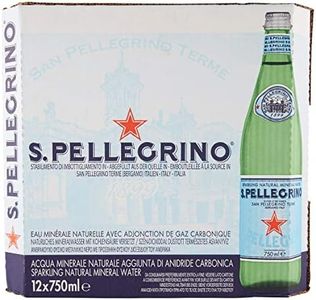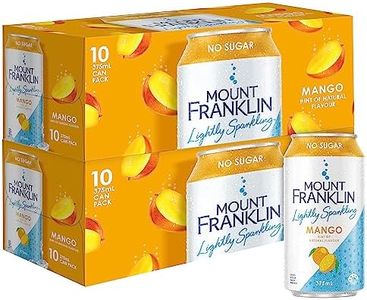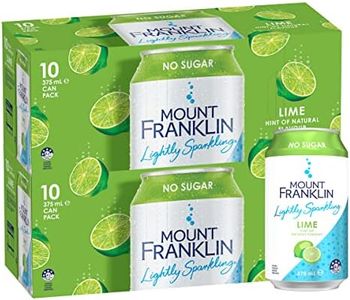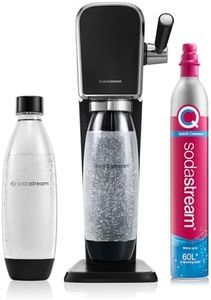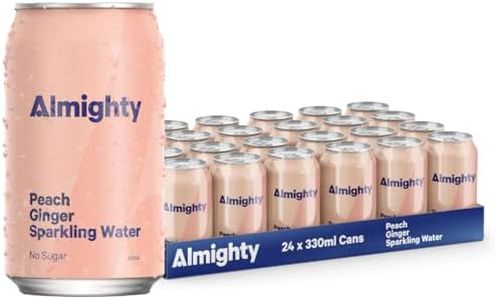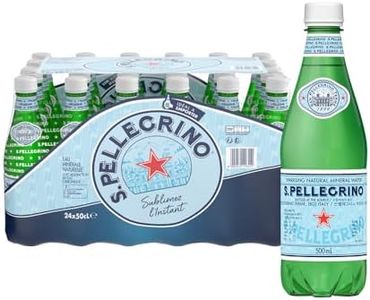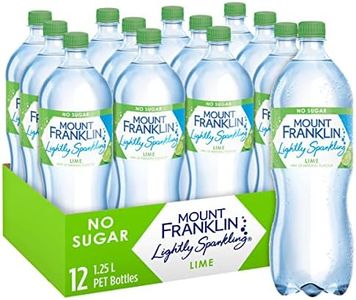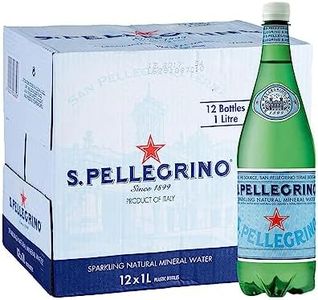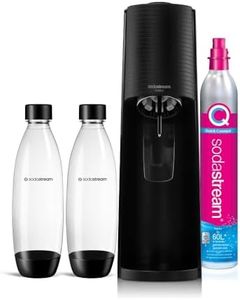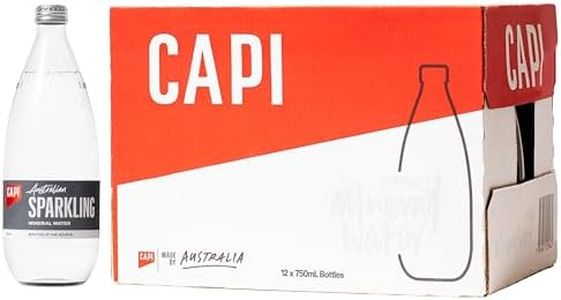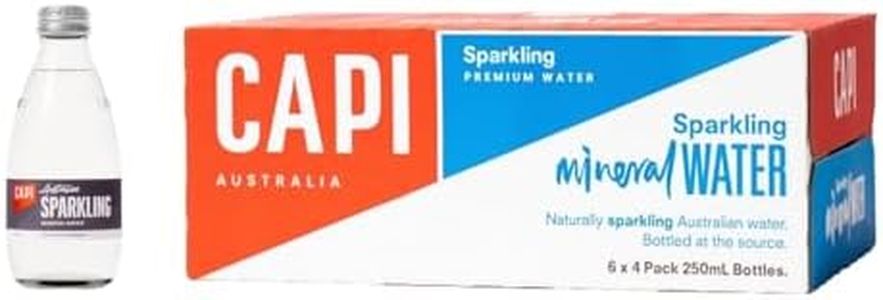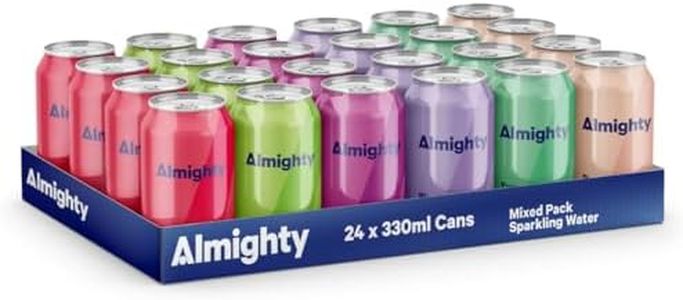We Use CookiesWe use cookies to enhance the security, performance,
functionality and for analytical and promotional activities. By continuing to browse this site you
are agreeing to our privacy policy
10 Best Sparkling Waters
From leading brands and best sellers available on the web.Buying Guide for the Best Sparkling Waters
Choosing the right sparkling water comes down to understanding what you're looking for in terms of taste, experience, and health preferences. Sparkling waters may all seem pretty similar, but they can differ quite a bit in the way they're made, their flavor profiles, how bubbly they are, and even what ingredients they contain. Understanding these key differences can help you pick a sparkling water that fits your taste, whether you're drinking it plain, mixing it with other drinks, or using it as a refreshing alternative to sugary sodas.Type of CarbonationThe type of carbonation refers to how the water gets its bubbles. Some sparkling waters are naturally carbonated, meaning their fizz comes directly from natural sources, while others are artificially carbonated by adding carbon dioxide gas. Natural carbonation tends to give a softer, gentler bubble, while artificial carbonation can provide a stronger, more intense fizz. If you prefer a lighter, more delicate mouthfeel, natural carbonation is often the way to go. If you like a sharp, more pronounced tingle, artificially carbonated waters might be your choice.
Mineral ContentMineral content is the amount and type of minerals dissolved in the water, like calcium, magnesium, or sodium. Some sparkling waters are just carbonated plain water with very low mineral content, while others, especially those labeled as 'mineral water,' contain naturally occurring minerals that give the water a unique taste and mouthfeel. If you like a clean, pure taste, go for waters with low mineral content; if you enjoy a fuller, slightly salty or mineral tang, choose waters with higher mineral content.
FlavoringSome sparkling waters are unflavored, offering just the taste of water and bubbles, while others come with natural or artificial flavorings, like lime, berry, or citrus. If you want a neutral taste or plan to mix the water with other drinks, unflavored is best. If you enjoy a little extra taste without added calories or sugars, flavored varieties, particularly those with natural flavorings, are ideal.
Ingredients ListChecking the ingredients list is important to ensure you're getting what you want in terms of purity and health. The simplest sparkling waters only have two ingredients: water and carbon dioxide. Some flavored or enhanced waters might include sweeteners, natural flavors, or preservatives. For the purist, stick to waters with the simplest ingredient list; if you're after variety, look for those with added flavors—but watch out for added sugars or artificial ingredients if that's a concern for you.
Bubble Size and StrengthThe bubble size and strength refers to how fizzy the water feels in your mouth. Some brands are known for fine, gentle bubbles, while others go for a bigger, more forceful fizz. If you find intense carbonation uncomfortable or are sensitive to strong bubbles, look for waters marketed as having softer carbonation. For those who love a powerful, effervescent kick, choose brands that emphasize strong bubbles.
Packaging and Bottle SizeSparkling waters come in a range of packaging—from cans to glass or plastic bottles and in sizes from small single-serve bottles to large multi-liter containers. Single-serve packaging is great for on-the-go or for ensuring the water stays at its fizziest. Larger bottles can be more economical or suitable for sharing, but may lose carbonation if not finished quickly. Choose your packaging based on how and when you plan to consume the water.

